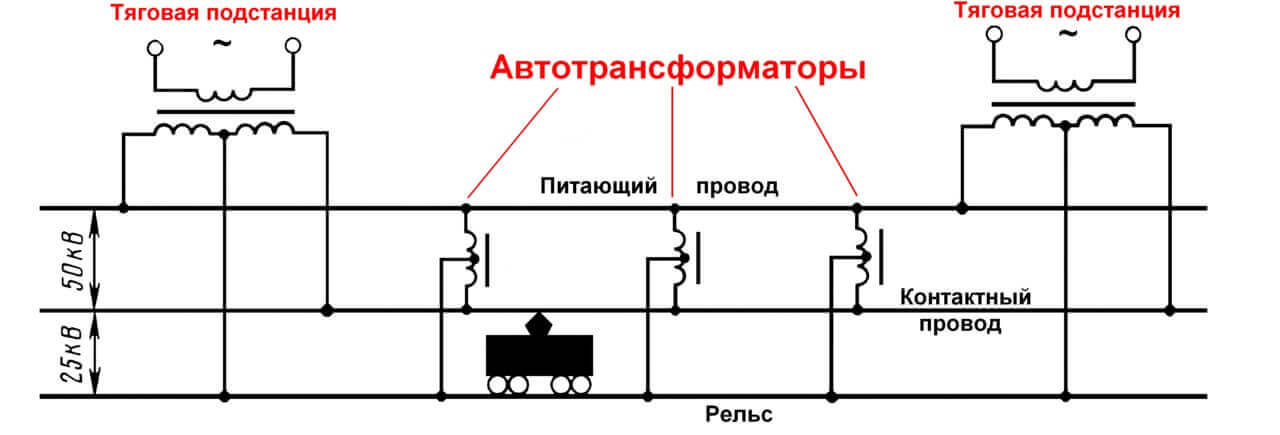What is the difference between a transformer and an autotransformer
Definitions
A transformer is an electromagnetic device that transmits energy through a magnetic field. It consists of two or more windings (sometimes called coils) on a steel, iron or ferrite core, depending on the number of phases, input and output voltages. Its main feature is that the primary circuit and the secondary are not electrically connected, that is, the windings do not have electrical contacts. This is called galvanic isolation. And such a connection of the coils is called inductive.
Below you see the conditional graphic designation of the two and three-winding transformer in the electrical circuit diagram:
They are increasing, decreasing and dividing (input voltage is equal to output voltage). At the same time, if you supply power to the secondary winding of the step-down transformer - you will get increased voltage on the primary windings, the same rule also works for the boost.
An autotransformer is one of the options for a transformer with one winding wound around the core in a principle similar to the previous case. In it, unlike ordinary trance, the primary and secondary circuits are electrically connected. So it does not provide galvanic isolation. Conventional graphic designation of the autotransformer you see below:
Autotransformers come with a fixed output voltage and are adjustable. The latter are known to many under the name LATR (laboratory autotransformer). They can also be both lowering and increasing. In an adjustable LATR, the secondary circuit is connected to a contact sliding along the coil.
Important! Due to the lack of galvanic isolation, autotransformers, by definition, cannot be isolating unlike ordinary ones!
Another difference is the number of autotransformer windings - usually it equals the number of phases. Accordingly, single-winding devices are used to power single-phase devices, and three-winding products for three-phase devices.
Operating principle
Briefly and in simple words, we will consider how each execution option works.
A transformer has at least two windings - primary and secondary (or several). If the primary is connected to the network (or another source of alternating current) - then the current in the primary winding creates a magnetic flux through the core, which penetrates the secondary turns, induces an emf in them. The principle of operation is based on the phenomena of electromagnetic induction, in particular Faraday's law. When the current flows in the secondary winding (to the load), the current in the primary winding also changes due to mutual induction. The voltage difference between the primary and secondary windings is determined by the ratio of their turns (transformation ratio).
Uп / Ud = n1 / n2
n1, n2 - the number of turns on the primary and secondary.
Speaking of an autotransformer, it has one winding, if there are several phases, the same number of windings. When an alternating current flows through it, the magnetic flux that occurs inside it induces an EMF in the same winding. Its value is directly proportional to the number of turns. The load (secondary circuit) is connected to the tap from the turns. On a step-up autotransformer, power is supplied not to the ends of the winding, but to one of the ends and the tap from the turns, in contrast to the transformer. What was depicted in the diagram above.
The main differences
To make it easier for you to understand what is the difference between a conventional transformer and an autotransformer, we have put together their main differences in a table:
| Transformer | Auto transformer | |
| Efficiency | The efficiency of the autotransformer is greater than that of a conventional one, especially with a slight difference in input and output voltage. | |
| Number of windings | Minimum 2 and more depending on the number of phases | 1 or more, equal to the number of phases |
| Galvanic isolation | there is | No |
| Danger of electric shock when powering household appliances | With an output voltage of less than 36 volts - small | High |
| Safety for powered appliances | High | Low, with a break in the coil on the turns after the tap to the load, it will get all the supply voltage |
| Cost | High consumption of copper and steel for large cores, especially for three-phase transformers | Low, due to the fact that for each phase there is only 1 winding, the consumption of copper and steel is smaller |
Scope of application
Transformers are used everywhere - from power plants and substations designed for tens and hundreds of thousands of volts, to power small household appliances. Although power supplies have been used recently, their generator and transformer on a ferrite core are also their basis.
Autotransformers are used in household voltage stabilizers. Often LATRs are used in laboratories for testing or repairing electronic devices. Nevertheless, they found their application in high-voltage networks, as well as for the electrification of railways.
For example, railway products use such products in 2x25 networks (two of 25 kilovolts each). As in the diagram above, a line of 50 kV is laid in sparsely populated areas, and 25 kV from a step-down autotransformer is supplied to the electric train through a contact wire. Thus, the number of traction substations and line losses are reduced.
Now you know what the fundamental difference between a transformer and an autotransformer is. To consolidate the material, we recommend watching a useful video on the topic:
Surely you do not know:










